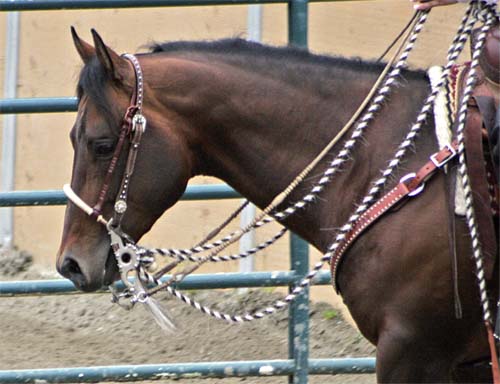So… What Is Contact, Really? (And Does Your Horse Know What You Think It Means?)
Let’s start with a simple question: What does contact mean to you?
No really—think about it. Is it a firm feel on the reins? A light touch? Eye contact? Telepathic connection? (Hey, we can dream.)
Whatever your answer is, chances are it means something completely different to your horse. In fact, your horse probably made “contact” with you before you even spotted where they were in the pasture. While you were still fumbling with your coffee and thinking, “Where the heck is he today?”—your horse had already locked in on your scent, your sound, your energy, and your general human vibes. Horses are basically nature’s highly tuned antennae with legs.
They’re incredibly aware of their environment, and even more sensitive to touch—especially around their mouths. A horse’s lips are like their version of fingertips. Ever watch one pick out a specific blade of grass like it’s choosing the best chip from a bag? Precision. Sensitivity. Grace. (Unless it’s breakfast time—then it’s a bit more like a vacuum cleaner.)
It’s been said a horse can feel a fly land on its hide during a thunderstorm. Let that sink in. That’s the level of sensitivity we’re working with. So when we talk about “contact” through the reins, we need to understand what that really means to them.
Our reins aren’t handles. They’re not brakes. They’re not tow ropes. They’re a way to have a conversation—and ideally, it’s a polite one. If your idea of contact involves hanging on to your horse’s mouth like you’re trying to pull-start a lawn mower, it might be time for a rethink.
Imagine this: you’ve got your reins in a nice straight line between your hands and the bit, then you feed out, say, 18 inches of rein. Guess what? You still have contact. Yep. If your communication is clear and your horse is tuned in, just picking up the reins a few inches can get a response. It’s like whispering instead of shouting—and who doesn’t appreciate a little quiet once in a while?
Now, let me be clear: I’m not suggesting you ride with spaghetti arms and reins flapping in the wind like you’re starring in an old Western. We want enough slack to allow softness, not so much that you couldn’t shorten up in a pinch.
Personally, when I’m riding in a snaffle bit, I like to keep my hands forward with a little dip—maybe 2 to 3 inches—from a straight line to the bit. That gives me room to adjust without constantly pulling. The horse, in turn, gets a break from feeling like they’re being micromanaged every second. And trust me—no one likes being micromanaged. Not even horses.
The beauty of this approach? It lets your horse respond to a lighter signal. You can gently say, “Hey, let’s do this,” instead of yanking the reins and screaming, “NOW!” Spoiler alert: horses like the gentle option better. And you’ll start to notice a more relaxed, willing partner underneath you—because you’re finally speaking a language they understand.

